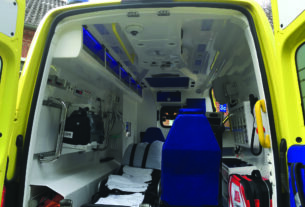The Telesalud group, a part of the Universidad de Caldas, has won the Regional Fund for Digital Innovation in Latin America and the Caribbean (FRIDA) award in the category “Internet for the promotion, guarantee and exercise of human rights and fundamental freedoms” for the development of a tele-psychiatry project in Colombian prisons.
This is the third time this project has received a FRIDA award, which will be presented at the Global Forum for Internet Governability, which runs from November 10 to 13 in Brazil.
On this occasion, Telesalud will receive three thousand dollars. “The award will give us greater visibility on national and international levels. Our most important goal is to replicate the experience in all the prisons in the country,” said Camilo Barrera Valencia, the project leader.
Financed by the Ministry of Information and Communications Technologies of Colombia (MinTIC) and Colciencias, the tele-psychiatry program for prisons began with a pilot project in the Medium Security Penitentiary of the City of Manizales. The motivation lay in the difficulties in providing treatment in prisons due to the high cost of transferring patients, restricted access to specialist doctors, a lack of consults and the poor coverage of the prison population.
The group of researchers organized two forms of treatment: synchronous and asynchronous (or delayed). The former involves the patient and psychiatrist interacting in real time by teleconference with the professional making a diagnosis and prescribing treatment in the moment. In the second, the consult occurs between the patient and a clinical doctor and the latter communicates with the psychiatrist who issues a diagnosis and treatment but never has contact with the inmate.
Telesalud has gone through six stages:
1. Physical, technical and administrative arrangements in the prison to provide the tele-psychiatry service.
2. Design and development of software to carry out the tele-psychiatry in synchronous mode (Videoconference System and Electronic Health Record) and asynchronous mode (Electronic Health Record System).
3. Application of the Zung test to 303 prisoners who reported having symptoms of a depressive disorder, which came up positive in 157 cases.
4. Performance of a cost-effectiveness study for 106 patients, 53 under the synchronous model and 53 under the asynchronous model. Application by a clinical doctor of the Hamilton scale, designed to quantitatively evaluate the gravity of symptoms and the changes in the depressed patient before and after treatment under each model.
5. Evaluation of all the costs of providing care to patients under both models. They included, among others: the cost of the general doctor and the psychiatrist with regard to the duration of the consult for each model, the technology used and the costs due to the inefficiency of both models (system or internet failures).
6. Analysis of the results of care and the costs, which determined that the most cost-effective model for tele-psychiatry for patients with depressive disorder incarcerated in a prison is asynchronous according to the results of clinical effectiveness and patient satisfaction studies.
According to Telesalud, psychiatric pathologies multiply by as much as four times in a prison environment. Their figures state that the most frequent mental disorders in prisons are:
• Depression (50%)
• Irritability (26%)
• Hallucinations (18%)
• Suicidal tendencies (6%)

